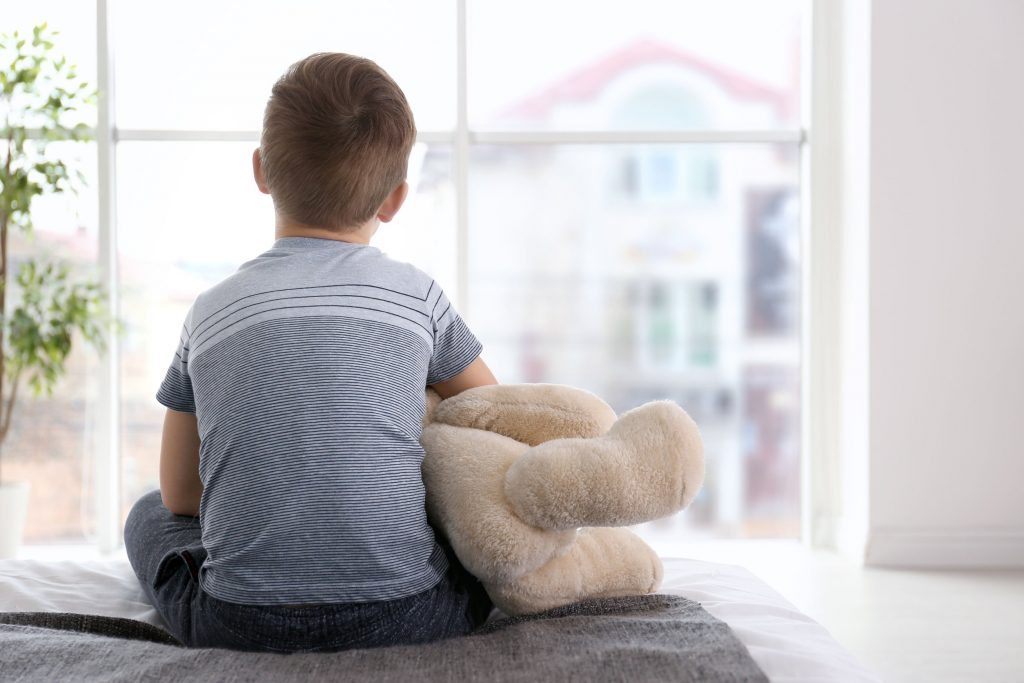Node Smith, ND
A recent report by the New Jersey Poison Control Center at Rutgers University showed a rise in suicide attempts by pre-teens over the past 18 months; a trend that has been seen across the nation.
Rise in suicide attempts by pre-teens over the past 18 months
This illustrates the need for people who encounter children regularly to be aware of early signs of mental illness, such as anxiety, depression and suicidal thoughts. Children who appear aggressive or despondent may actually be dealing with depression, anxiety, substance abuse or trauma,” said Kelly Moore, program manager for the Children’s Center for Resilience and Trauma Recovery, Rutgers University Behavioral Health Care.
Moore trains adults who have daily contact with young children, such as teachers, coaches, parents and others, to recognize the warning signs of serious mental illness and suicidal thoughts, and to connect them with the help they need.
Moore talks about children and mental health care
What might people not know about children’s mental health?
Very young children can contemplate suicide. Studies have shown that the suicide rate is roughly two times higher for black children ages 5 to 12 compared with white children of the same age. In youth ages 13 to 18, however, it is the reverse, with a higher percentage of attempts by white children than black children. Beyond the risk of suicide, studies have shown that early trauma and stress can lead to long-term mental and physical health problems in adulthood.
What are the barriers that prevent children from receiving mental health care?
Mental illness is still stigmatized in our culture. The casual use of phrases like “crazy,” “psycho” or “I’m so OCD,” minimizes the seriousness of mental health challenges and marginalizes those who experience these challenges. This may result in youth or their parents being less likely to seek help.
Some parents are reluctant to seek help for their children when they first suspect a problem, due to a fear of having their children labeled with a mental health–related diagnosis. This can add to the child’s depression or anxiety. Another barrier is the limited number of psychiatrists who treat very young children.
People should treat their child’s mental health as they do their physical health. Questions about emotional wellness and exposure to trauma or stress should be a regular part of annual well visits. If people view mental health conditions as they do other chronic conditions such as asthma or diabetes, we may see more proactive measures to help people get the care they need.
What are the signs that a child might need mental health care?
Children usually indicate their emotional experience through their behavior. For example, children with anxiety might frequently complain of physical ailments such as stomachaches or headaches or they may often ask to go to the school nurse. Other signs include a sudden loss of interest in activities that they usually enjoy, social isolation or a depressed mood.
Children who are coping with anxiety seek constant reassurance. They might ask a lot of questions repeatedly after receiving answers, always need to know the day’s schedule and details, or need to be constantly told that everything is okay. If a child is dealing with anxiety or depression, it is a good idea to assess for suicide risk and ask if they are having thoughts about suicide. If so, ask if they have a plan and access to means, and get them help immediately. Asking a child if he or she is thinking about suicide will not put the thought into their head.
People can sign up for training programs that will help them understand how to quickly identify and refer kids that are at risk for suicide or mental health problems. One of the training programs we use is Youth Mental Health First Aid, an eight-hour course sponsored by the National Council on Behavioral Health.
What role do schools play in children’s mental health care?
Schools are usually the place where problematic behaviors, poor social interactions and academic struggles are first noticed by their teachers, counselors, coaches and peers. Schools can help by creating professional development curriculum that educates staff at every level about early recognition of mental illness and suicide risk. School districts can also invest in partnerships with local mental health service providers to either embed them in district or create links for families. More importantly, schools and communities can surround children with climates of respect and support.
 Node Smith, ND, is a naturopathic physician in Humboldt, Saskatchewan and associate editor and continuing education director for NDNR. His mission is serving relationships that support the process of transformation, and that ultimately lead to healthier people, businesses and communities. His primary therapeutic tools include counselling, homeopathy, diet and the use of cold water combined with exercise. Node considers health to be a reflection of the relationships a person or a business has with themselves, with God and with those around them. In order to cure disease and to heal, these relationships must be specifically considered. Node has worked intimately with many groups and organizations within the naturopathic profession, and helped found the non-profit, Association for Naturopathic Revitalization (ANR), which works to promote and facilitate experiential education in vitalism.
Node Smith, ND, is a naturopathic physician in Humboldt, Saskatchewan and associate editor and continuing education director for NDNR. His mission is serving relationships that support the process of transformation, and that ultimately lead to healthier people, businesses and communities. His primary therapeutic tools include counselling, homeopathy, diet and the use of cold water combined with exercise. Node considers health to be a reflection of the relationships a person or a business has with themselves, with God and with those around them. In order to cure disease and to heal, these relationships must be specifically considered. Node has worked intimately with many groups and organizations within the naturopathic profession, and helped found the non-profit, Association for Naturopathic Revitalization (ANR), which works to promote and facilitate experiential education in vitalism.
Node Smith graduated from the National University of Natural Medicine (NUNM) in 2017, and is currently licensed as a naturopathic physician in Oregon and working towards becoming licensed in Saskatchewan, Canada as well.





